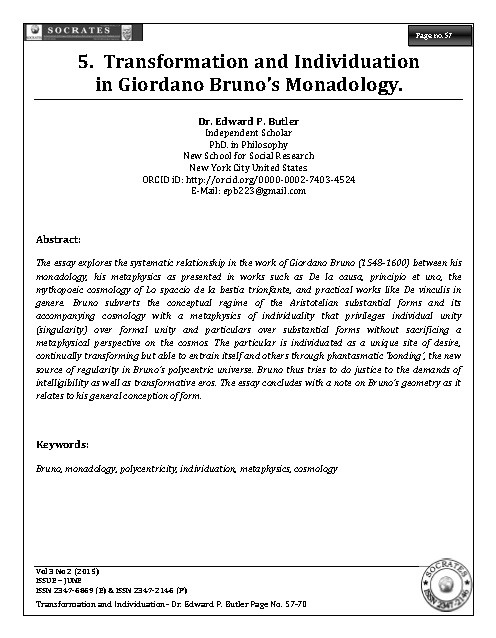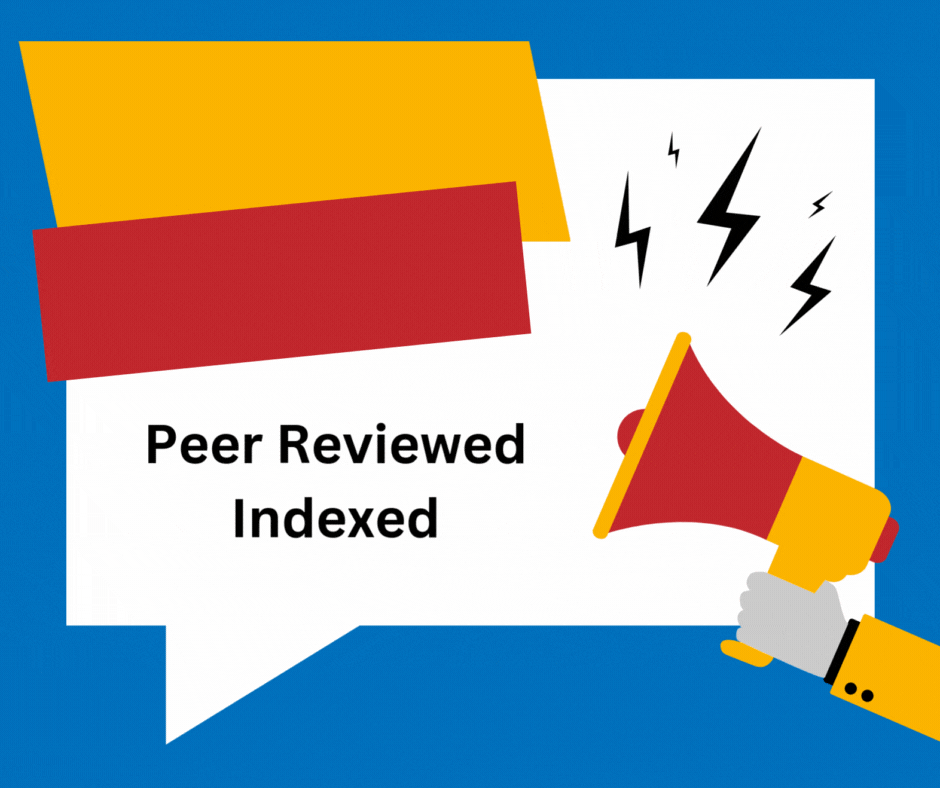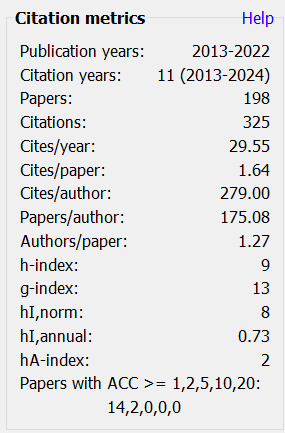Transformation and Individuation in Giordano Bruno’s Monadology
Keywords:
Bruno, monadology, polycentricity, individuation, metaphysics, cosmologyAbstract
The essay explores the systematic relationship in the work of Giordano Bruno (1548-1600) between his monadology, his metaphysics as presented in works such as De la causa, principio et uno, the mythopoeic cosmology of Lo spaccio de la bestia trionfante, and practical works like De vinculis in genere. Bruno subverts the conceptual regime of the Aristotelian substantial forms and its accompanying cosmology with a metaphysics of individuality that privileges individual unity (singularity) over formal unity and particulars over substantial forms without sacrificing a metaphysical perspective on the cosmos. The particular is individuated as a unique site of desire, continually transforming but able to entrain itself and others through phantasmatic ‘bonding’, the new source of regularity in Bruno’s polycentric universe. Bruno thus tries to do justice to the demands of intelligibility as well as transformative eros. The essay concludes with a note on Bruno’s geometry as it relates to his general conception of form.
Downloads
Metrics
References
Bönker-Vallon, A. (2007). “L’unité divine et la structure mathématique de la nature: le développement dessciences naturelles chez Giordano Bruno.” Pp. 59-72 in P. Magnard, ed.
Bruno, G. (1879-1891). Jordani Bruni Nolani opera latine conscripta publicis sumptibus edita, 3 vols. Neapoli: D. Morano [1.1 (1879), 1.3 (1889), 2.2 (1890), 2.3 (1889)]
—(1998). Cause, Principle and Unity and Essays on Magic, trans. and ed. Robert de Lucca and Richard J. Blackwell. Cambridge: Cambridge University Press
—(2002). The Cabala of Pegasus, trans. Sidney L. Sondergard & Madison U. Sowell. New Haven, CT: Yale University Press
—(2004). The Expulsion of the Triumphant Beast, trans. Arthur D. Imerti. Lincoln, NE: University of Nebraska Press
Catana, L. (2005). The Concept of Contraction in Giordano Bruno’s Philosophy. Aldershot: Ashgate.
Gatti, H. ed. (2002). Giordano Bruno: Philosopher of the Renaissance. Aldershot: Ashgate
—(2010). Essays on Giordano Bruno. Princeton, NJ: Princeton University Press
Magnard, P. ed. (2007). Fureurs, héroïsme et métamorphoses. Louvain: Peeters
Mendoza, R. (2002). “Metempsychosis and Monism in Bruno’s nova filosofia.” Pp. 273-297 in Gatti, ed.
Pinchard, B. (2007). “Au péril des liens.” Pp. 91-105 in Magnard, ed.
Saiber, A. (2005). Giordano Bruno and the Geometry of Language. Aldershot: Ashgate
Salza, L. (2007). “Nature et homme dans la ‘mutation vicissitudinale’.” Pp. 37-56 in Magnard, ed.
Schettino, E. (2002). “The Necessity of the Minima in the Nolan Philosophy.” Pp. 299-325 in Gatti, ed.

Downloads
Published
How to Cite
Issue
Section
License
Revised Copyright/CC license that applies to all the articles published after 05-02-2017
Attribution-NonCommercial 4.0 International (CC BY-NC 4.0)

Copyright/CC license that applies to all the articles published before 05-02-2017
Attribution-Non Commercial-No Derivatives 4.0 International (CC BY-NC-ND 4.0)

Author(s) will retain all the right except commercial and re-publishing rights. In the case of re-publishing, they will have to obtain written permission from the journal. Additional licensing agreements (Creative Commons licenses) grants rights to readers to copy, distribute, display and perform the work as long as you give the original author(s) credit, they can not use the works for commercial purposes and are not allowed to alter, transform, or build upon the work. For any reuse or distribution, readers and users must make clear to others the license terms of this work. Any of these conditions can be waived if you get permission from the copyright holders. Nothing in this license impairs or restricts the authors’ rights. To view a copy of this license, visit http://creativecommons.org/licenses/by-nc-nd/4.0/ or send a letter to Creative Commons, 171 Second Street, Suite 300, San Francisco, California, 94105, USA.
Research Papers published in SOCRATES are licensed under an Attribution-NonCommercial-NoDerivatives 4.0 International (CC BY-NC-ND 4.0)












